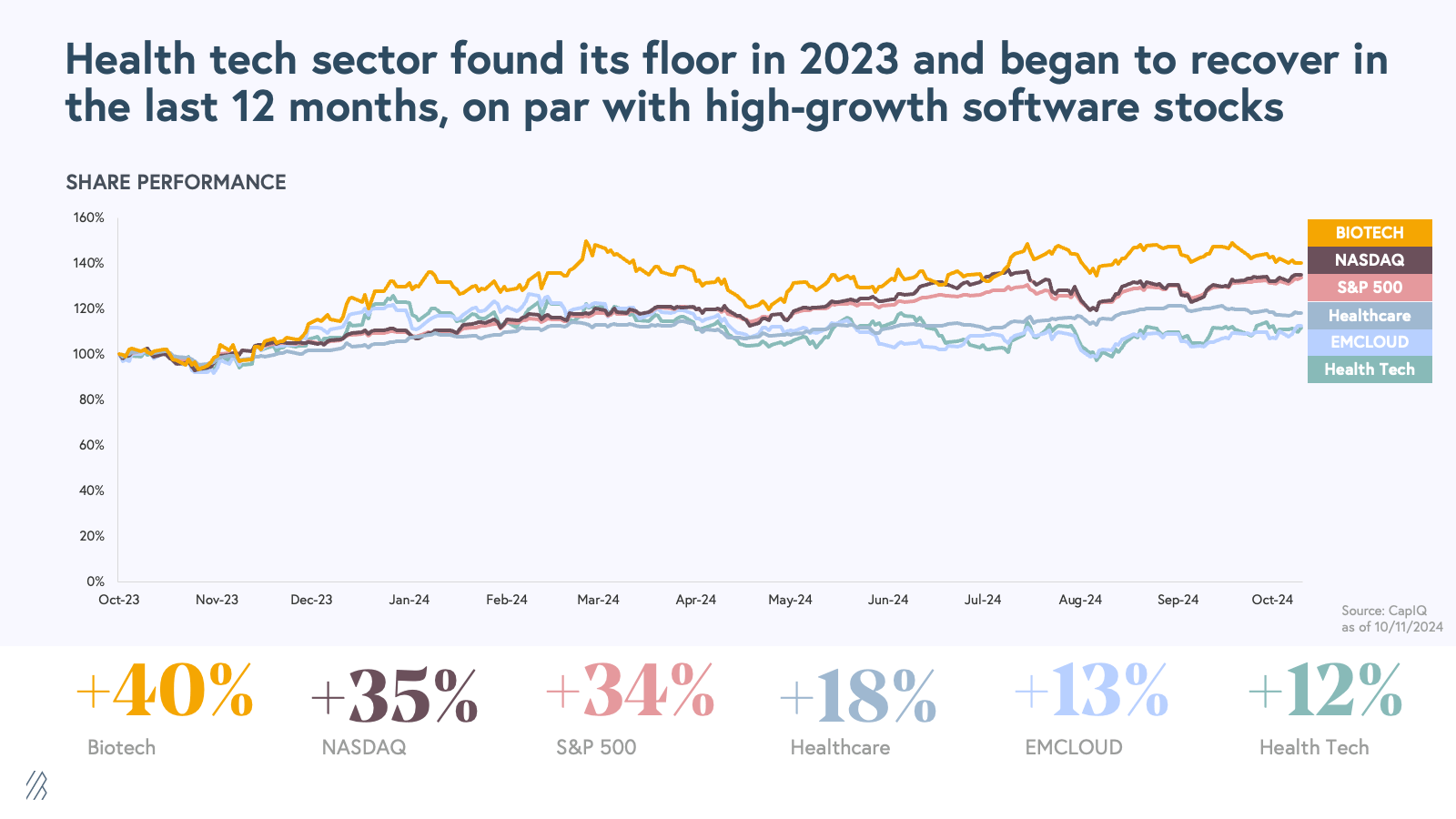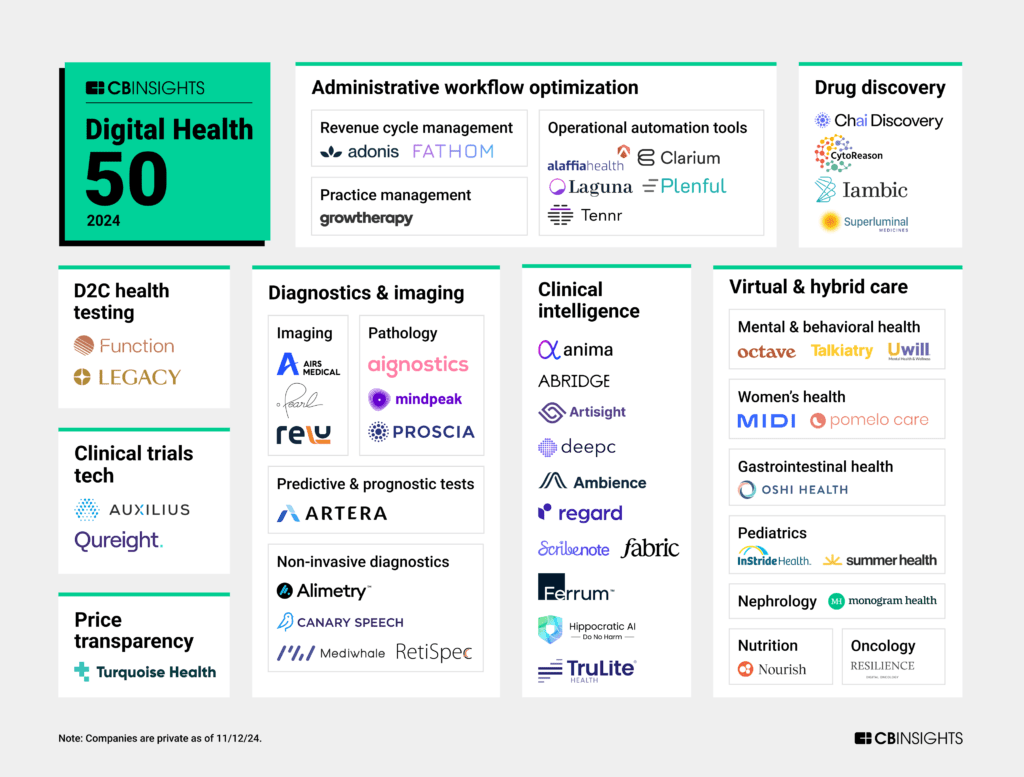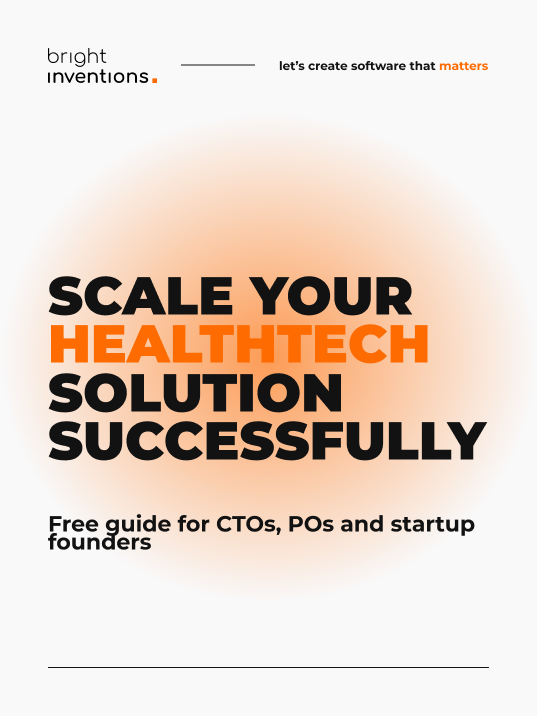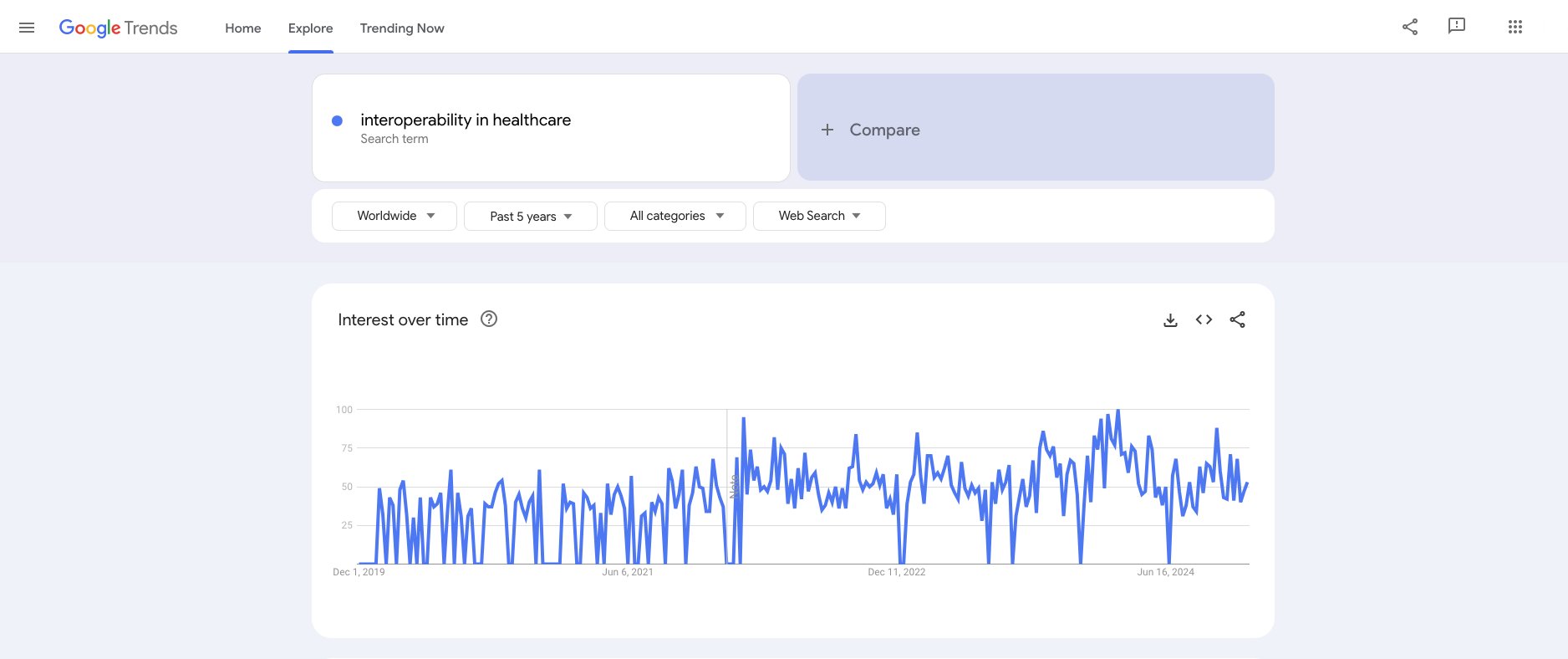7 Trends in HealthTech to Watch in 2025
The year 2025 will help healthcare software companies move past the industry's struggles of recent years and might provide some crucial answers. What will the direction of healthcare software growth be? Which smart healthcare devices will prove truly essential? What will be the X factor for investors? Are you ready for 2025 HealthTech trends?

Contents:
HealthTech will transition into the post-recovery phase with AI bringing investors
2025 will show how AI can be implemented wider in digital health
2025 might bring a breakthrough in AI for diagnostics
It's the last moment to catch up on interoperability in the healthcare system
2025 will help to determine what healthcare devices we really need
Chronic diseases will continue to drive the future of healthcare technology
Hybrid apps as investor magnets in the healthcare industry
HealthTech will transition into the post-recovery phase with AI bringing investors
The past few years have been challenging for the healthcare providers as they grappled with the aftermath of the COVID-19 pandemic. However, 2024 has emerged as a year of recovery and renewed momentum for the industry. The State of Health Tech 2024 highlights growth, particularly in biotech taking the lead.

Source: State of Health Tech 2024
What's more, investors have their own type. 😉 And yes, AI is a key factor for investors, as we can read on rockhealth.com:
For early-stage startups using AI (38% of digital health companies that raised A rounds in H1 2024 were AI-enabled), big Series A rounds can help support AI upstart costs like training models or acquiring datasets.
CB Insights' annual list of the most promising digital health startups, "The Digital Health 50", also indicates the direction HealthTech is heading. Notably, 33 out of the 50 companies are developing AI-augmented solutions.

Source: The Digital Health 50
2025 will show how AI can be implemented wider in digital health
It's true that in 2024, some healthcare professionals wanted to appear trendy and boasted about revolutionizing healthcare with their AI-powered solutions, even if it was a stretch at best. However, amidst the flood of news about incorporating AI, we could genuinely find companies that successfully implemented it, allowing users to experience it firsthand, especially in the chatbot area. Here is an example of an interesting AI chatbot implementation:
AI chatbot Ebb introduced by Headspace
Ebb is an empathetic AI companion integrated into its app to assist users in navigating life's challenges. Ebb facilitates self-reflection and emotional processing, offering personalized recommendations from Headspace's extensive library of meditations and mindfulness exercises.
AI for healthcare workflow optimization
Various companies are leveraging artificial intelligence to optimize healthcare workflows across multiple domains:
Administrative task automation for healthcare providers
Automating administrative tasks in healthcare has become a priority for many companies aiming to improve efficiency and reduce clerical burdens. Examples include Notable Health, Qventus and UiPath.
Personalized treatment plans (precision medicine)
Creating personalized treatment plans using AI and data analytics is transforming patient care. Examples include Tempus, and Flatiron.
Enhancing patient interaction
Enhancing patient interaction through conversational AI and virtual assistants. Examples include Ada, and Talkie.
Health data management
Improving health data management for better clinical decision-making is a focus for several companies. Examples include Innovaccer, Datavant, and Redox.
Medical & health records transcription
Recording and transcribing doctor-patient communication for medical record documentation is an area that quite a few companies have been actively working on. Examples include DeepScribe, Abridge, Lyrebird Health, Tali AI, Deepgram, and Dorascribe.
scale your solution with our free guide

2025 might bring a breakthrough in AI for diagnostics
Although in 2024, there was widespread discussion about AI's potential in diagnostics, actual implementations in this field remain limited, despite many companies actively working on it. We'll see if 2025 will bring a true breakthrough for companies working on diagnostics, with patients actively benefiting from AI-powered solutions.
Here are examples of companies and organizations working on implementing AI in disease diagnostics that are worth watching in 2025: SkinVision, iCAD, Eyenuk, AinnovaTech, Cleerly, AI Dermatologist.
It's the last moment to catch up on interoperability in the healthcare system
The global healthcare interoperability solutions market contributes around 49.6% to the global healthcare services market value at about USD 7.5 Billion in 2022. As one HealthTech leader stated during the interview we conducted at HLTH Europe 2024:
The trend should be about integrating solutions that enhance the entire patient journey, not just isolated digital parts.
Interoperability is poised to be an even more prominent topic than in previous years. According to Google Trends data from the past five years, interest in this term has been steadily increasing.

The year 2025 is expected to be a pivotal moment for healthcare companies to implement interoperability solutions effectively. In another article, we've delved into interoperability for healthcare.
2025 will help to determine what healthcare devices we really need
As we predicted, 2024 was a standout year for the creation of wearables, health & medical devices in healthcare. From robotic pets for seniors and socks that prevent falls to gloves designed to reduce hand tremors in Parkinson's patients, these innovations have certainly captured attention. They are also essential for remote monitoring, which for years have been one of crucial tech trends. We have released a long list of smart healthcare devices that are currently available or under development.
The question for 2025 is whether the healthcare community can determine the true necessity of these diverse devices that in some cases create Internet of Medical Things. It will likely be a demanding year for healthcare device producers as they work to finalize prototypes, secure funding, and somehow commercialize their fascinating ideas. But can these smart devices go beyond being merely intriguing to become integral parts of our daily lives? That question is soon to be answered.
This challenging situation presents an excellent opportunity for another trend to gain momentum, as recently highlighted by Medical Futurists: repurposing everyday devices we already use (like headphones) for healthcare and medical purposes. This could be the pivotal shift healthcare innovators embrace in 2025.
Chronic diseases will continue to drive the future of healthcare technology
Chronic diseases account for approximately 74% of all deaths globally according to WHO. This includes cardiovascular diseases, which are the leading cause of death worldwide, responsible for about 17.9 million deaths annually, followed by cancers (9.3 million), chronic respiratory diseases (4.1 million), and diabetes (2.0 million).
The significant issue that many health system providers must address is not only the rising number of patients with chronic diseases but also the fact that these conditions are starting to affect people much earlier than in previous generations.
A notable example is ulcerative colitis (UC), a type of inflammatory bowel disease, that is increasingly being diagnosed in children and adolescents. While it traditionally affects individuals in their late 20s, recent trends indicate a rise in pediatric cases.
In many cases, chronic diseases are also considered invisible diseases, as they often present no visible symptoms in those suffering from them. However, this does not mean that the people around us don’t require regular healthcare. In another article, we delved into the subject of developing technology for patients with invisible diseases.
Hybrid apps as investor magnets in the healthcare industry
2025 will reveal which companies can truly endure in the highly competitive digital health market, a space heavily reliant on investor funding. What lessons can healthcare startup founders take away from these challenging years?
If possible, start small, low-cost, and validate your idea quickly. Building an MVP is essential, but the choice of technology is just as critical. Hybrid technologies including React Native and Flutter, while not perfect, can be the best option for startups to validate their ideas and secure the funding necessary for scaling.
However, it’s not a one-size-fits-all approach, and not every startup founder should blindly follow this trend. If you’re planning to build a complex solution that operates extensively in the background or relies heavily on Bluetooth communication, then native development is the only viable path.
Also, some MVPs simply cannot be low-cost due to the complexity of the technology or the requirements of the healthcare domain. Additionally, many startups have to rely on bootstrapping or securing initial funding before they can even begin thinking about market validation. Hybryd app cannot be a investor-magnet in cases like that.
Read our blog post to explore the differences between native and hybrid app development.
Feeling excited about any particular trend in healthcare software?
These are top healthcare technology trends that might shape the future of HealthTech. 2025, we are ready for you!

